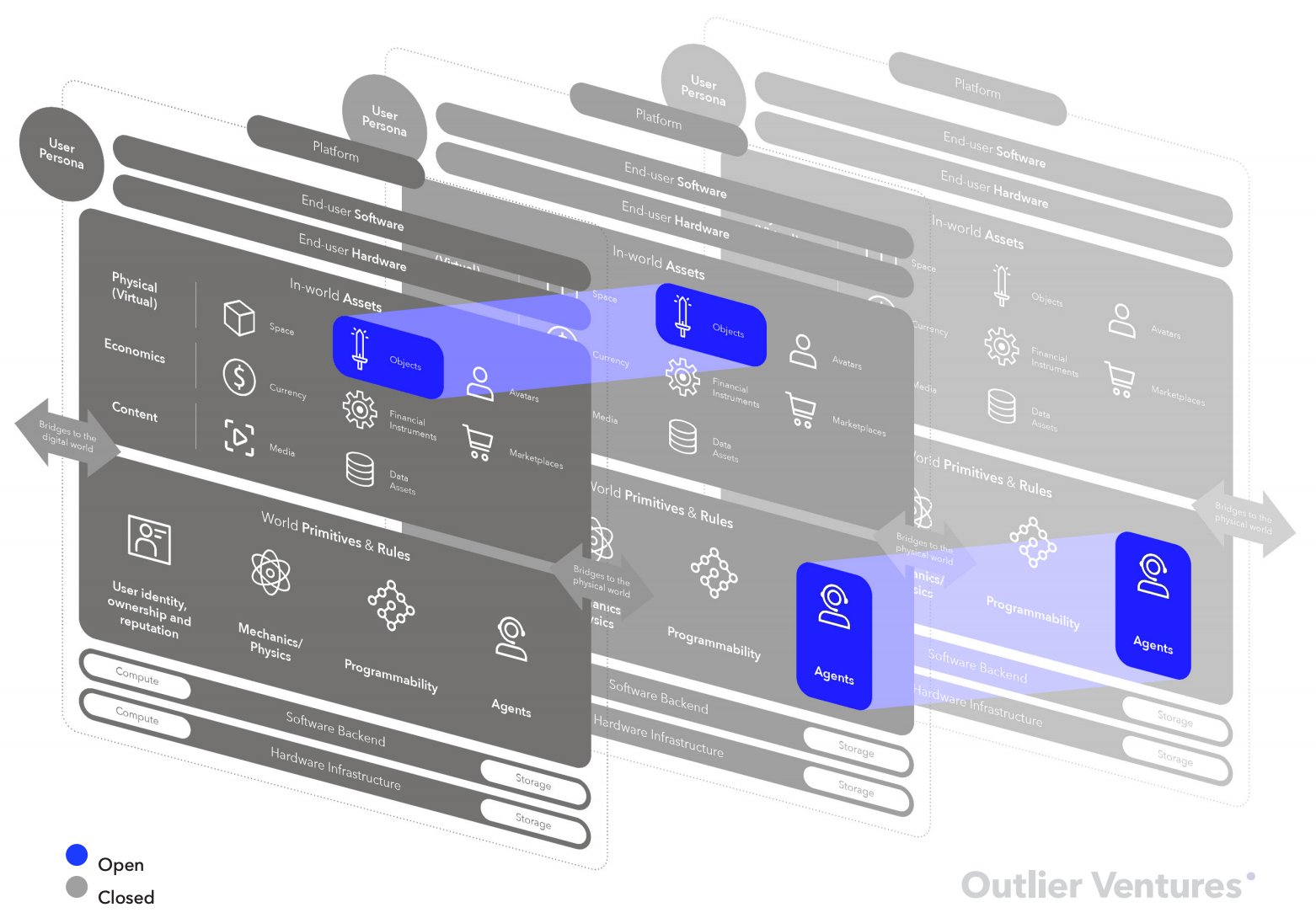Well firstly there is a general direction of travel towards open standards in the Metaverse even by what you might at first glance regard as it’s closed participants including:
Open 3D object media standards: There are a number of now well established standards around 3D object media including Pixar’s USD (Universal Screen Description) and NVIDIA’s MDL (Material Definition Language), and NVIDIA’s Omniverse (Open Beta) and GLTF.
Metaverse Web Browsers: There are increasing in-browser capabilities being developed from Google Gaming Browser and Mozilla VR, with WebGL now widely supported and WebXR on the verge of enabling generic support to VR and AR devices, as well as crypto-currency browser wallets like Metamask. Although we are not quite there with seamless in-world transactions.
But also as alluded to earlier we believe there will be both top-down and bottom-up reasons driving a move towards openness. Let’s start with bottom-up because we believe this will be the primary driver for innovation in its early stages. As described the principle of self-sovereignty, the sovereignty of identity, and associated digital wealth (including assets and increasingly data) are based on the concept of user-centricity: where a user takes precedence over any given platform. Where some may argue the user in aggregate is the platform. In this context virtual worlds become the interface to create, trade or experience virtual goods and services which are portable and not restricted to a single platform. This is a powerful economic driver and a fundamental paradigm shift away from the Closed Metaverse and its business models we see dominate the Web today.
When creations, wealth, and assets can have a life ‘off platform’ and be exchanged and become infinitely interchangeable with one another, freely in open markets, they grow in liquidity and consequently value, simply because more value can be exchanged between itself without limitation. You could consider it a ‘value squared’.

Many creators like artists are experiencing this for the first time where assets with NFTs (Non Fungible Tokens) are sold for more off-platform in secondary markets than in their primary sale (where they are minted). And this will be extended even further as we develop standards for royalties and can be to translate memes themselves into forms of social currencies rewarding not just the creation of a thing, but its value chain of evolution and amplification through sharing in social channels. This brings powerful network effects not experienced in closed systems and it is our belief as creators, and this increasingly includes established popular brand franchises looking to new mediums to monetise their assets, begin to follow the money the open virtual worlds that allow for economic interoperability will win out.
And we are already seeing early but increasing forms of integrations of The Open Metaverse OS into established social channels like Discord including crypto wallets and NFT marketplaces and exchanges. Discord brings with it 250m+ gamers who will most likely first experience Web 3 technologies, and the Open Metaverse economic layer, without ever leaving Discord. It’s important to remember Discord’s rise coincided with the growth of e-sports, through games like League of Legends, Overwatch and Fortnite which all initially had limited communication tools for streaming, which Discord elegantly solved outside of those closed worlds in an open environment. And the same is happening with nascent Open Metaverse virtual worlds like Decentraland, which at the time of writing does not support in world audio requiring in world events to use Discord for the audio streaming. So cross-world social, and increasingly economic layers, will run in parallel to virtual worlds initially until they become embedded with them. But even once these limitations are resolved in these new virtual worlds discord is likely to continue being the social layer around and between worlds and likely to play host to the convergence of Web 3 & gaming communities.
We can also regard different virtual worlds, open or closed, as slices of a larger whole. Users can and will by design interact with and be part of one or more of these worlds. And whilst a single world could outgrow all others and become a significant part of the Multiverse they do not enjoy the same defensible ‘moats’ seen in Web 2 of locking users and their data into their platforms and holding them ransom. The only challenge to this being closed hardware that is so desirable and performant end-users will tolerate a more closed approach as has been seen with Apple. That aside this could be a significant break from the cycles of bundling and unbundling we typically see in internet based technology paradigms. And the only real moat can be the degree of openness, economic incentive design and verified trust in the rules of the virtual world.
This later point around incentives is critical because one of the powerful things about blockchains as we have seen with Bitcoin, Ethereum and its various DeFi protocols is you can hardcode economic incentives for early adopters to join a network into the system itself. Bootstrapping adoption, compute power and storage or even financial capital to develop the network. And we are seeing this with many early virtual worlds both creating their own crypto currency or selling virtual land, or offering NFTs as rewards all of which is easily tradable off platform with and for other crypto currencies. In effect the Open Metaverse is its own bank and can create any number of incentives and games to grow adoption.
Therefore it is more likely virtual worlds in The Open Metaverse are increasingly interoperable and interconnected to the point it will be hard to distinguish them as separate but rather different instances of a whole.